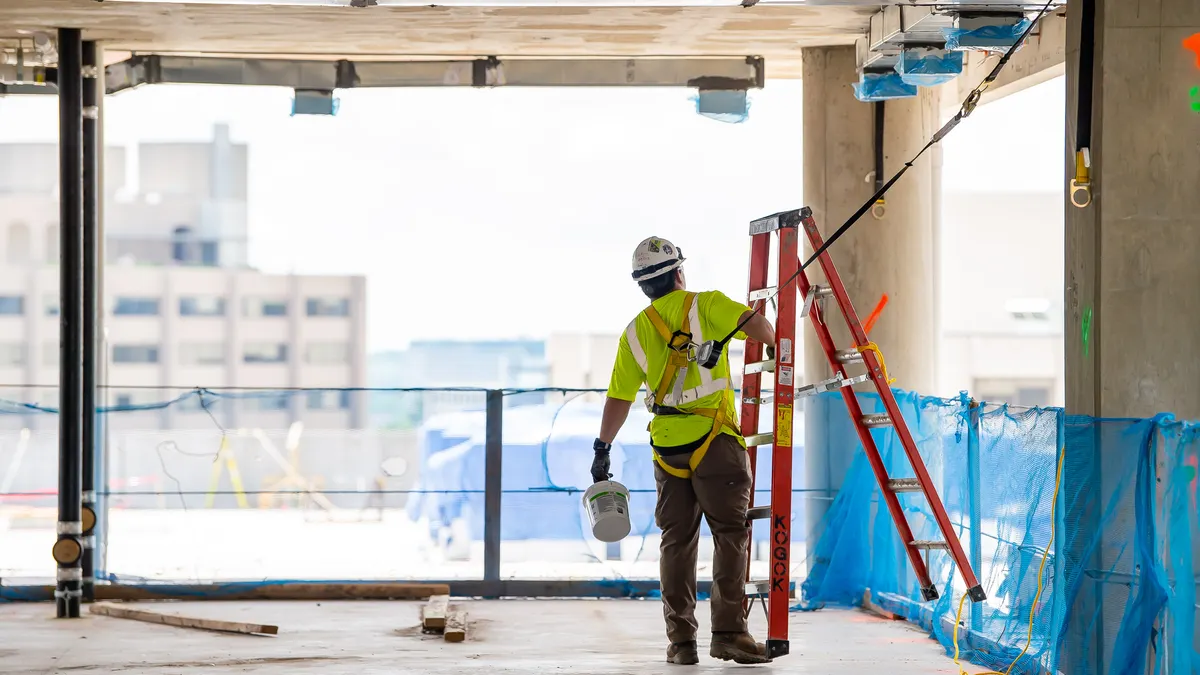
The construction industry is grappling with a severe and accelerating labor shortage, with more than 500,000 workers needed nationwide, according to recent industry analysis and labor market reporting. The shortage is expected to worsen through 2026, driven by an aging workforce, declining interest among younger generations, immigration policy impacts, and immigration enforcement actions. This crisis directly threatens project timelines, costs, and industry profitability across all construction sectors.
Construction labor shortages represent one of the most significant challenges facing the industry in 2025, with broad implications for contractors, developers, project managers, and facility owners nationwide.
The construction industry currently faces a deficit of over 500,000 workers, according to recent industry reporting. This represents a critical shortage that impacts virtually every segment of construction—residential, commercial, industrial, infrastructure, and specialty trades.
The shortage is not evenly distributed across all trades. Skilled trade positions—electricians, plumbers, welders, HVAC technicians, and other specialized roles—face particularly acute shortages. The industry has struggled for years to attract younger workers to skilled trades, resulting in an aging workforce with limited replacement pipeline.
Labor shortages are directly delaying construction projects across the United States. According to the Associated General Contractors of America (AGC), nearly 45% of construction projects experienced delays in 2025 that cited labor shortages as a contributing cause. This represents a significant increase from previous years and demonstrates the scope of the problem.
Project delays cascade through the entire construction industry, affecting:
Construction faces a severe demographic challenge with an aging workforce and insufficient replacement workers entering the industry. The average age of construction workers continues to rise as experienced workers retire and are not replaced by younger workers entering skilled trades.
Fewer young people are entering construction trades, driven by:
Recent immigration policy changes and enforcement actions have intensified labor shortages, particularly in regions with high reliance on immigrant workers. According to reporting from KPBS and industry sources, more than one-quarter of construction workers nationwide are foreign-born, making immigration policy a critical factor in construction labor supply.
Recent Immigration and Customs Enforcement (ICE) activities have created uncertainty across the construction industry, with some workers leaving positions and employers uncertain about workforce stability. Construction industry organizations have expressed concerns about the impact of aggressive immigration enforcement on already-strained labor markets.
The construction industry, which has long struggled to find sufficient workers, now faces additional uncertainty and potential workforce reductions from immigration enforcement actions.
Construction salary growth is slowing in 2025, marking a potential shift in contractor compensation strategies. According to a recent Baker Tilly report on construction compensation trends, salary growth has decelerated from the aggressive increases seen in prior years.
This slowdown reflects:
However, despite slower salary growth, labor competition remains intense for quality workers, with contractors still offering premium compensation to attract and retain experienced personnel.
Construction labor shortages exist within a broader employment context marked by economic uncertainty. The national jobs market showed weakness in October 2025, with U.S.-based employers announcing 153,074 job cuts—up 175% from October 2024 and the highest benchmark for the month in 22 years.
Despite this broader decline in hiring, construction continues to show relative resilience in labor demand, though constrained by the inability to find adequate workers. This creates a paradoxical situation where construction companies have projects to execute but cannot find workers to staff them.
Construction firms must prioritize workforce development, retention, and recruitment strategies to remain competitive. Success in the current labor market requires:
Sources: Associated General Contractors of America (AGC) project delay data 2025. Baker Tilly Construction Compensation Report 2025. Construction Dive reporting on construction labor market, November 2025. KPBS reporting on construction industry labor shortage and immigration impact, November 2025. Job cuts data from national employment reporting, October 2025.
Syracuse Housing Authority finances Phase 2 of East Adams redevelopment. $100M+ project creates 125 senior affordable apartments on remediated brownfield. Vertical construction begins early 2026.
Governor Hochul awards $10M from East Side Building Fund to 35 Buffalo commercial and mixed-use projects. Funding supports facade renovations, adaptive reuse, and new mixed-use development across East Side priority corridors.
Rochester launches $60M convention center renovation. Downtown Joseph A. Floreano Riverside Convention Center undergoes comprehensive modernization including interior systems, lighting, HVAC, and equipment. Construction phases planned 2029-2033.